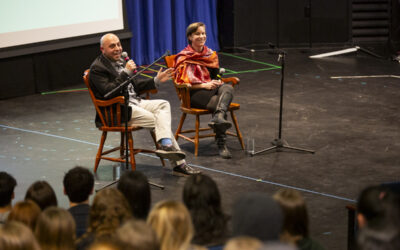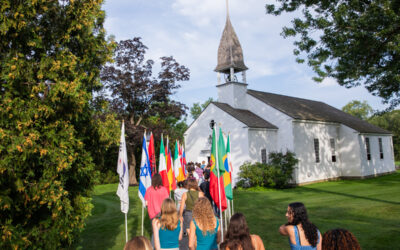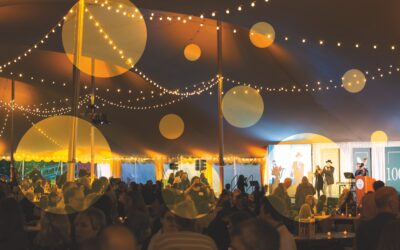
How does the energy we rely on reach us? Asking this question has shaped the career of Kevin Koch P’24, co-founder and CEO of Technicians For Sustainability, a solar design-and-build firm based in Tucson, Ariz. In a January 27 assembly, he spoke to Concord Academy students about his company’s social and environmental mission, discussing inequities around conventional energy production, including pollution from power plants and fuel extraction in low-income and rural areas and the downstream effects of climate change, such as disproportionate impacts of increased food prices and utility bills. Koch also demystified a process many of us experience as modern-day magic: When we flip a switch, a light goes on. While we might imagine that the energy that powers our bulb is cached somewhere, ready for use, Koch explained that’s not the case, and he argued that understanding energy generation and transfer is indispensable to planning a greener future.
When Koch was in high school, he set his sights on a career in biology, later enrolling in graduate school for neuroscience. During his hourlong bike commute to campus in Newark, N.J., he said at CA, he became “overwhelmed by the amount of infrastructure and energy that was being used.” Wondering where that power came from, and what happened where it was generated, eventually led him to leave graduate school to pursue a career in sustainable energy. Koch founded a community nonprofit focused on solar energy education before moving into the business sector, where he has worked to increase access to, and trust in, solar energy for the past 25 years. He has also been active in proposing policy, finance, and engineering solutions to the barriers to going solar.
“The grid is a really amazing system,” Koch said at CA. “It generates electricity the moment that the electricity is needed.” He explained that the load-following grid we rely on—a vast network of variously sized power lines—was designed a century ago. It can’t store electricity, meaning that the power we generate has to be used instantaneously.
“Right now, on this sunny day, the chances of these lights being powered by solar electrons is really high,” he said, pointing to the Performing Arts Center spotlights overhead, because there’s a large solar generator in Concord, Mass. But solar power isn’t available at night, and it currently meets only around a small fraction of the town’s total energy demand. It also isn’t as well-suited for use through the load-following grid as the natural gas that still dominates in New England. To demonstrate where CA’s power comes from, Koch displayed the website ISO Express, which monitors energy use in real time.
Most power companies are investor-owned and operate to generate profits for shareholders, Koch explained. In contrast, Concord Municipal Light and Power (CMLP) is municipally owned. The public plant’s “job is to serve the community of Concord,” and “instead of immediately going for the lowest cost fuel source,” Koch said, the individuals who operate it are more likely to consider “the long-term benefit to the community.” Concord has committed to reaching 100% clean energy by 2030, but it’s already on track to meet that target this year.
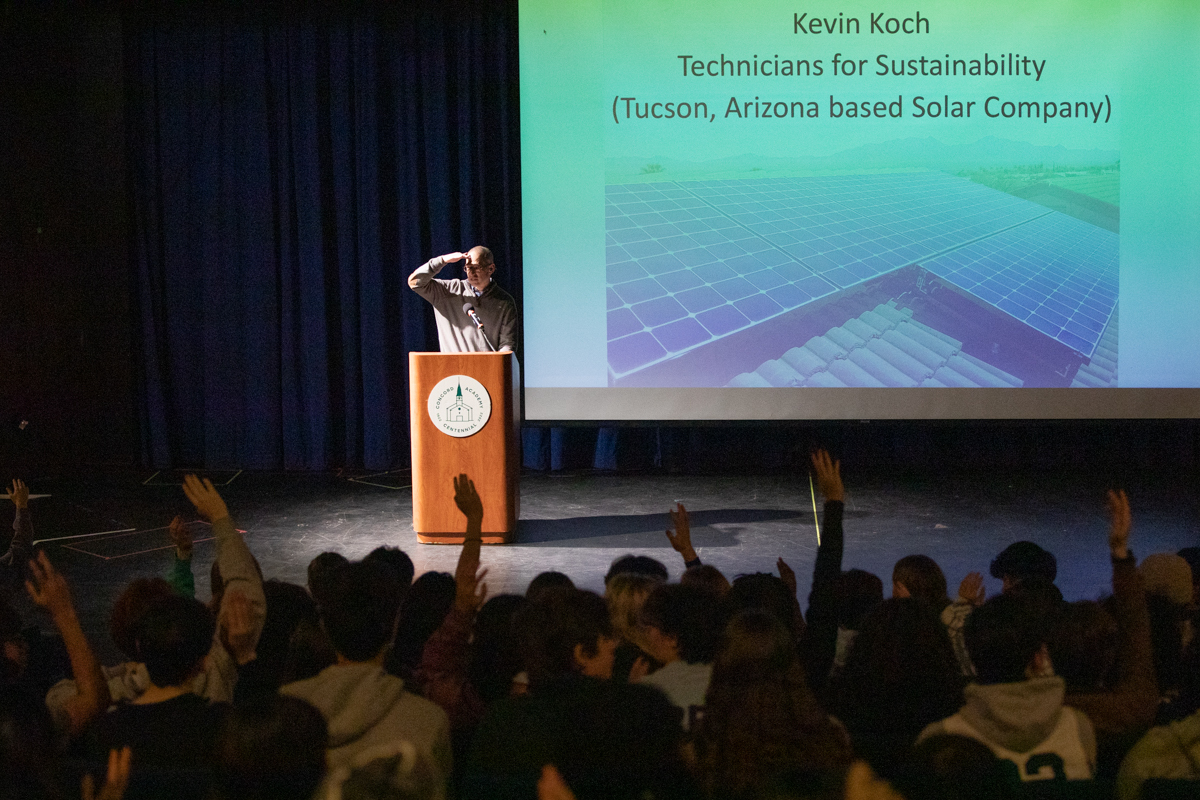

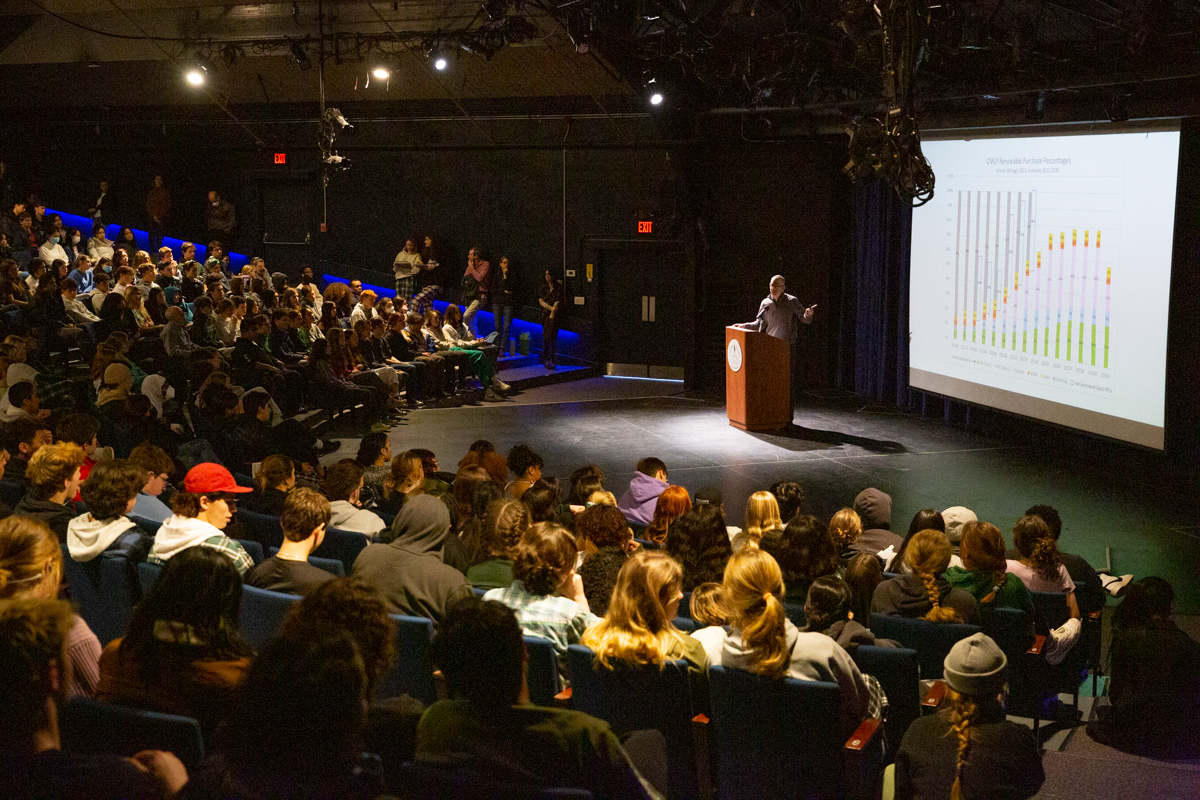
A quick audience poll yielded a consensus that this was great news. Koch agreed, but he went on to complicate the simplistic way clean energy is presented to consumers. He clarified that CMLP doesn’t generate electricity but rather buys it from facilities in New England; 60% of its portfolio includes wind, solar, hydro, nuclear, and landfill gas capture sources, and the remaining 40% is unspecified. CMLP’s ability to claim 100% clean energy relies on its purchase of renewable energy credits, which provide proof that energy was generated from renewable energy resources and fed into the shared grid.
In practice, that means that even if a local utility purchases electricity from, say, a hydroelectric power plant in Vermont, Koch said, “those electrons probably don’t make it here.” Instead, electrons move from the source of generation to the nearest load, or point of use. So the actual electrons lighting CA’s hallways often come from the closest source: In Concord, that’s the large power lines that connect to natural gas-fired plants. “Whether they’re purchased from there or not, that’s where they’re actually coming from,” Koch said.
He explained why this distinction matters in striving for greater environmental sustainability: “Renewables are not load-following, so we may have to redefine how the grid works to make it 100% renewable.”
Koch outlined several steps toward a truly clean energy system, such as increasing efficiency to reduce energy consumption; adding more solar, wind, and hydroelectric power infrastructure; creating storage systems through innovations that invest in potential energy; and creating a responsive smart grid to operate appliances when excess power is generated.
Transforming the energy economy will also require more engineers, lawyers, policy specialists, businesspeople, software developers, and tradespeople committed to making clean energy a reality, Koch said in conclusion. Individuals from many fields can contribute, as long as they’re more interested in generating solutions than in dwelling on current barriers; we need, he said, “people who won’t take no for an answer.”
